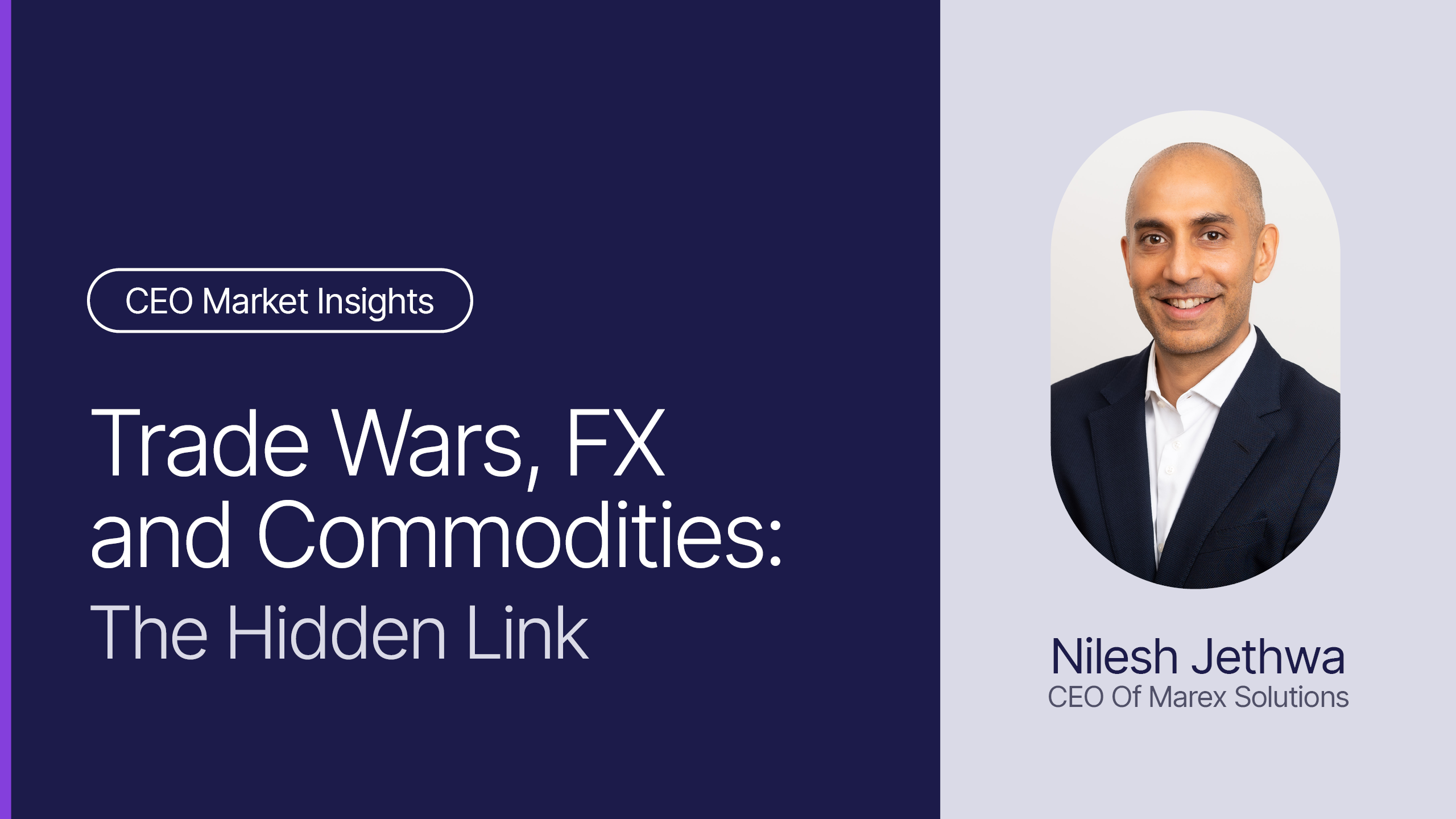
With all the headlines around tariffs and global trade disruptions, it’s easy to overlook a subtler but equally powerful force impacting commodity markets: foreign exchange volatility.
Since the first round of Trump-era tariffs, the FX landscape has become unpredictable. The USD initially weakened as markets priced in an aggressive trade posture, but as negotiations dragged and retaliation mounted, the greenback reversed, leading to a sharp spike in G10 FX volatility. From CAD and MXN to CNY and EUR, investors and corporate treasurers scrambled to adjust. In parallel, many producers in commodity markets were left grappling with price distortions that broke from long-held norms.
What happens when currency volatility and commodity markets collide? Let’s review two cases highlighted by the traders on our hedging desk: oil and ags.
1. The USD-Oil Decoupling: Cross Narratives
Traditionally, a weaker USD has supported oil prices—but not this time. Oil prices fell in tandem with the dollar. Why? Because the market began pricing in slower global trade, lower economic growth, and weaker demand. This was further aggravated by OPEC’s surprise decision to increase supply. April’s sell-off in crude illustrates how geopolitical and FX dynamics are increasingly intertwined—often in counterintuitive ways.
2. Agriculture and Softs: Volatility Without Volume
In ags markets, FX instability has added yet another headwind. Coffee and cocoa prices remained quiet, not just because of tariffs and weather—but because FX noise kept traders in “wait and see” mode. This meant open interest remained low. Liquidity is thin. Traders and producers hesitate to commit as they try to digest the impact of U.S. import duties and shifting crop outlooks.
Meanwhile, grains and oilseeds were caught in a perfect storm: trade war jitters, favourable weather, and strong South American production (especially soybeans) keeping a lid on prices.
3. Currency Moves Reshaping Hedging Behaviour
The extreme volatility following the April “Liberation Day” tariffs triggered a surge in corporate hedging activity—both defensive and opportunistic. Firms rushed into action to lock in budget rates or recalibrate exposures.
But now they’re shifting gears, and it looks like we’re back to the “wait and see” mode. Companies are once again reluctant to commit until they see where bilateral negotiations land.
Still, one thing seems to have changed: every player in the FX and commodities markets have become extremely focused in the interaction between trade policy, FX moves, and commodity flows. Thus accepting that we’re probably entering a period of higher volatility than recent years.
The implication for traders and producers is clear: proactive risk management across both markets (the underlying commodity and FX) is no longer optional. Whether it’s supply chain exposure to soybean volatility or the FX impact on energy procurement, the combined effect can hit margins quickly.
Get monthly CEO Market Insights delivered to your inbox





